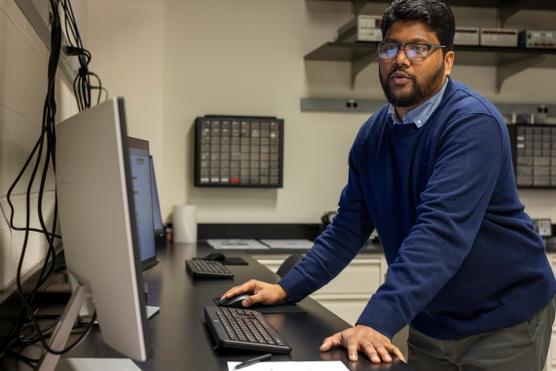

The year 2023 will go down as a milestone in the history of superconductivity, as a material made in the US has been whipping up a storm after earlier claims of breakthroughs by South Korean researchers. Few people, however, believe in the reliability of the result. Suspicions of dishonesty have even been cast against its principal co-author, Ranga Dias, a professor at the University of Rochester (New York State), who has already had two science papers withdrawn from the scientific literature because of doubts about the data he provided. He has also been accused of plagiarism in his thesis.
On March 8, the US team made a splash in the journal Nature. It said it had manufactured a material that becomes superconducting as soon as the temperature drops below just 21°C high pressure – 10,000 times the pressure exerted by the atmosphere. Still, this remains 200 times lower than the previous record.
Questions about the results' quality immediately arose, and several teams tried to replicate the experiment without success. The latest one, from China, posted its negative findings on July 1 on the prepublication site Arxiv.org, explaining that while the material's resistance dropped, it remained non-zero. Only one other US team was able to test a Rochester sample and achieve electrical measurements compatible with those published. "We can't say it's a replication because the sample is very dirty and inhomogeneous. Magnetic measurements are also missing," pointed out Hai-Hu Wen, the co-author of one of the negative studies at Nanjing University (China). "That's in progress," said Russell Hemley, a professor at the University of Illinois responsible for these experiments and Dias' former co-author.
An accumulation of facts further undermined confidence in Rochester's result. The latest: On September 1, the journal Nature published a warning on the page of the March 8 paper stating that "the reliability of data presented in this manuscript is currently in question. Appropriate editorial action will be taken once this matter is resolved."

On August 15, the same kind of warning led to the retraction of an earlier paper signed by Dias and published in Physical Review Letters in 2021. The journal had enlisted the help of four experts, as revealed by US journalist Daniel Garisto in Nature back on July 25. Their reports, which Le Monde was able to consult, are devastating. In it, they explained that the data supposedly provided from experiments are not represented in the graphs that were published! Worse still, they confirmed that these graphs were partly decals of graphs previously published for a different material and under different pressures.
You have 51.47% of this article left to read. The rest is for subscribers only.
